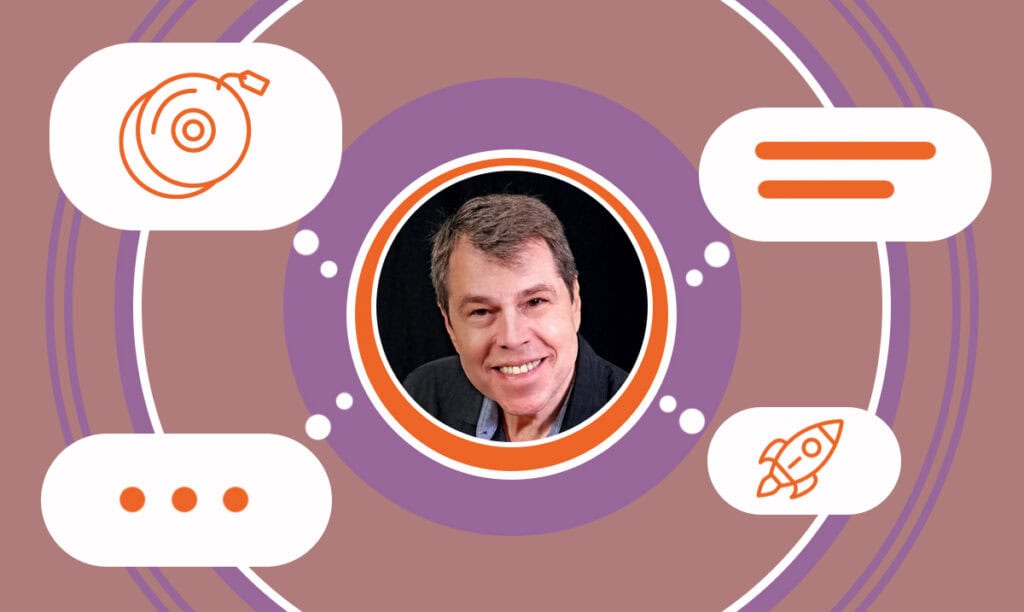In this interview, we delve into the inspiring journey of Shira Yevin, founder and CEO of Gritty In Pink and the INPINK marketplace and frontwomanof ...
How Sound Lounge Became a Pioneer in Audio Post-Production
Written by: Esther Strauss
Esther is a business strategist with over 20 years of experience as an entrepreneur, executive, educator, and management advisor.
Published on September 10, 2024

In this exclusive interview, we explore the journey and evolution of Sound Lounge through the perspectives of its key leaders. Dana Villarreal, executive producer, Taylor Maggard, managing director, and Marshall Grupp, COO and partner, share their unique insights into the studio’s origins, growth, and success. Marshall Grupp takes us through the founding vision and early challenges, while Dana Villarreal and Taylor Maggard discuss the studio’s strategic expansion and approach to talent. Together, they provide a comprehensive view of how Sound Lounge has become a trailblazer in the audio post production industry.
The Sound Lounge Origin Story
SBS – How did Sound Lounge come to be? What inspired its founding, and what were the early challenges?
MG – When I started doing sound design for commercials in 1986, I would bring all my work to Peter Holcomb and Tom Jucarone who mixed the spots. In 1998, I was approached by Peter Corbett to open an audio post facility. I have always wanted to have a creative boutique. I first approached Tom and we decided to ask Peter to come aboard.
Our first challenge was whether our clients who were mostly located in midtown Manhattan would come down to the Flatiron district. Additionally, Sound Lounge was not going to look like a mixing studio that most of our clients were accustomed to. We decided to make our space very “loungy.” Every room felt like you were sitting in your own living room. We would have windows and high ceilings. Fortunately, we are still going strong in our 26th year and our studio design has been copied throughout the NYC audio post community.
Service Evolution
SBS – Could you describe the evolution of Sound Lounge’s services over the years? How have client needs and industry trends influenced these changes?
MG – From the beginning, we have been very strategic in how we wanted to grow our business. From the start, we relied on our core business of mixing television commercials. We moved into radio production two or three years later with the hiring of an agency producer and copywriter who specialized in radio commercials. At the same time, we saw the need to bring in a casting director. We realized with experience that 80% of the radio spots we casted Sound Lounge would also record and mix.
The big move came in 2005 when we opened our film and television division with the addition of a Dolby-certified theater. All these moves were motivated by our belief that Sound Lounge could do anything relating to sound, whether it is a 30 spot, a full-length movie, or a streaming television series like “The Bear.”
Attracting Top Talent
SBS – How do you attract and retain top talent in such a competitive industry?
MG – It has been part of our history of promoting from within. Very early on, we established a relationship with the State University of New York at Fredonia, which has an excellent audio production program. A summer internship would lead to a position in the machine room and, in most cases, lead to becoming a Sound Lounge audio engineer. I believe very strongly in creating a company culture where our employees don’t want to leave even as we face the economic challenges that many post companies are feeling.
Technological Impact
SBS – What technological advancements have had the biggest impact on your operations and the quality of your services?
DV – Over the course of Sound Lounge’s 25+ years in operation, there have been countless advancements in technology. The biggest, I think, has been the change from the physical transfer of files to digital. Transferring files digitally online as opposed to physically shipping files on CD/DVD/tape increased our efficiency exponentially. Another example would be the advancement of the audio software we use. Every year, software gets smarter and easier to use, which also allows us to service our clients faster each year. However, these technological advancements also make our offerings more accessible to more people, which increases our competition. So, while these advancements are great in so many ways, it’s definitely a double-edged sword.
Marketing Success
SBS – What strategies have been most effective in marketing Sound Lounge’s services to potential clients?
TM – First and foremost, we love showcasing our work! Whether it’s a feature film, a commercial, or a podcast, we make sure to highlight our projects on our website and social media. This not only shows off our versatility but also our commitment to quality. Another big one for us is being active in the industry. We’ve hosted a lot of events over the years, as well as attending panels, festivals, and conferences. These allow us to meet new people, show who we are, and stay on top of industry trends. Of course, social media is huge, too. We actively engage on platforms like LinkedIn, Instagram, and Facebook to connect with potential clients and share our latest work.
Balancing Art and Deadlines
SBS – How do you maintain a balance between artistic integrity and meeting client expectations and deadlines?
MG – Audio post-production has always been a collaborative art form between creator and client. Putting a sound against a frame of a picture is one of the great wonders of the world.
There are so many choices! It is our job to give our clients our passion, experience, and technical knowledge so they can make the decision on how best to tell their stories. We are deeply committed to helping our clients be as successful as possible.
Advice for Startups
SBS – What advice would you give to someone looking to start their own audio post-production studio in a competitive market like New York City?
MG – In the audio post landscape today, you must be very sure of what your offerings are going to be. Don’t be a “jack of all trades, master of none.” The success of Sound Lounge comes back to company culture. We want to have employees who believe what we believe and are willing to give 100% to support and fulfill those beliefs. Finally and most important, have enough cash to weather the ups and downs which are unique to our industry.
Future Outlook
SBS – How do you see the future of audio post-production evolving, and how is Sound Lounge preparing for those changes?
MG – The greatest threat I see is the continued efforts by the large agency groups to bring the work in-house, from production to post. It must be our goal and continued efforts to show all brands that we, the boutique companies, still offer the most creative and passionate artists with realistic budgets. In terms of Sound Lounge’s success, we must continue to market ourselves as “experts” in our field who will go the extra mile to produce the best work in our industry.
Networking Power
SBS – What role do networking and industry relationships play in the success of Sound Lounge?
TM – Relationships are really at the heart of what we do at Sound Lounge. For us, it’s all about creating and maintaining strong connections within the industry. A big part of our business comes from referrals and repeat clients. When people are happy with our work, they’re more likely to come back or recommend us to others. This word-of-mouth is incredibly powerful. Another key element is trust. By nurturing long-term relationships, we build a solid foundation of trust, which is essential for our clients to believe in us. This trust allows them to feel confident in our ability to take on difficult, unconventional, and challenging projects. They know we’ll deliver above expectations and make them look good.
Handling Revisions
SBS – How do you handle challenges such as client revisions and last-minute changes in project scope?
DV – This comes up often, and it’s best managed through clear communication with our clients. If a project is heading out of scope, it is our job to make sure the client is aware as soon as possible so that it can be addressed with an overage added to our budget and/or an extension to the deadline. There are, of course, times when one or both of those solutions are not available, so larger conversations are needed regarding how to address them. There can be a fine line between servicing your clients and standing up for your bottom line.
Misconceptions in Audio Post
SBS – What are the most common misconceptions clients have about audio post production, and how do you address them?
DV – Audio is one of the last steps in the post-production process and can oftentimes be overlooked — through lack of time allotted, unrealistic budgets, and/or overlooked creatively. We make it a point to teach our clients where we can, and to show them the power of what excellent audio provides to their project. We also try to be involved in the process as early as we can in order keep our voice in the collective mix.
Community Contribution
SBS – In what ways does Sound Lounge contribute to the local artistic and creative community in New York City?
DV – We pride ourselves in contributing to the local creative community as often as we are able. We frequently donate our space for industry gatherings, and we contribute mixing and sound editing expertise to both film student projects and up-and-coming filmmakers, as simple as providing our employees a space to explore their own passions. Finally, from our very first “party” (and we have had many), we have provided a space for our industry to kick back and have a little fun!
Reflections on Growth
SBS – Looking back, is there anything you would have done differently in building and growing Sound Lounge?
MG – I have always been the person to experiment with our offerings. Some have been successful like Sound Lounge Everywhere and some not so successful, like when we started a music company. The world of audio post-production is still a mystery to many of our clients and understanding how they pick a post house to work with is a challenging task. I am at the back end of my career so I can’t look back. What I am doing, and it took our company almost 25 years to understand is, if we look at the “life cycle of a job” and are passionate and proactive and over-deliver at every touchpoint of the cycle, then I see a very bright future for Sound Lounge.
Subscribe to Our Newsletter
and gain insider access to cutting-edge business insights and trends.
Featured Resources

How Shira Yevin Is Empowering Women in Music with Gritty In Pink
Published on June 21, 2024
Read Now

Building a Top NYC Recording Studio with Michael Kevin Walsh
Published on June 20, 2024
Michael Kevin Walsh is the owner of The Smooth Spot, a premier recording studio located in midtown Manhattan. Known for its high-quality vocalrecord ...
Read Now

10 Best Business Ideas for Musicians and Music Lovers
Published on November 4, 2022
Music is big business and could provide you with a steady stream of big profits if you make the right connections and know what your audienceneeds.& ...
Read Now
Comments